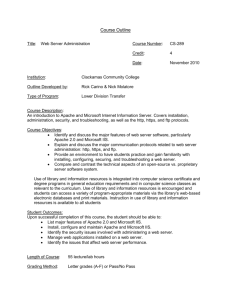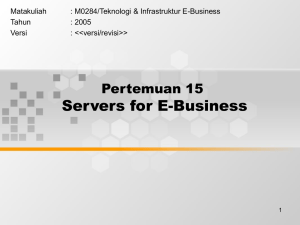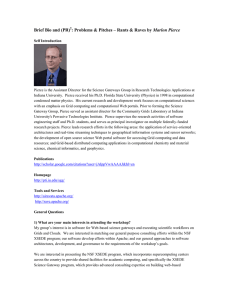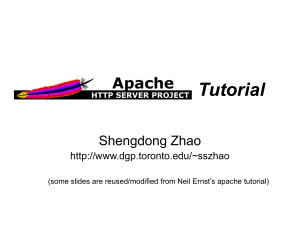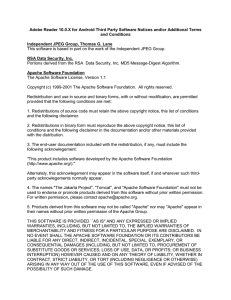Systems Engineering Midterm Exam - Apache & Cable TV Design
advertisement
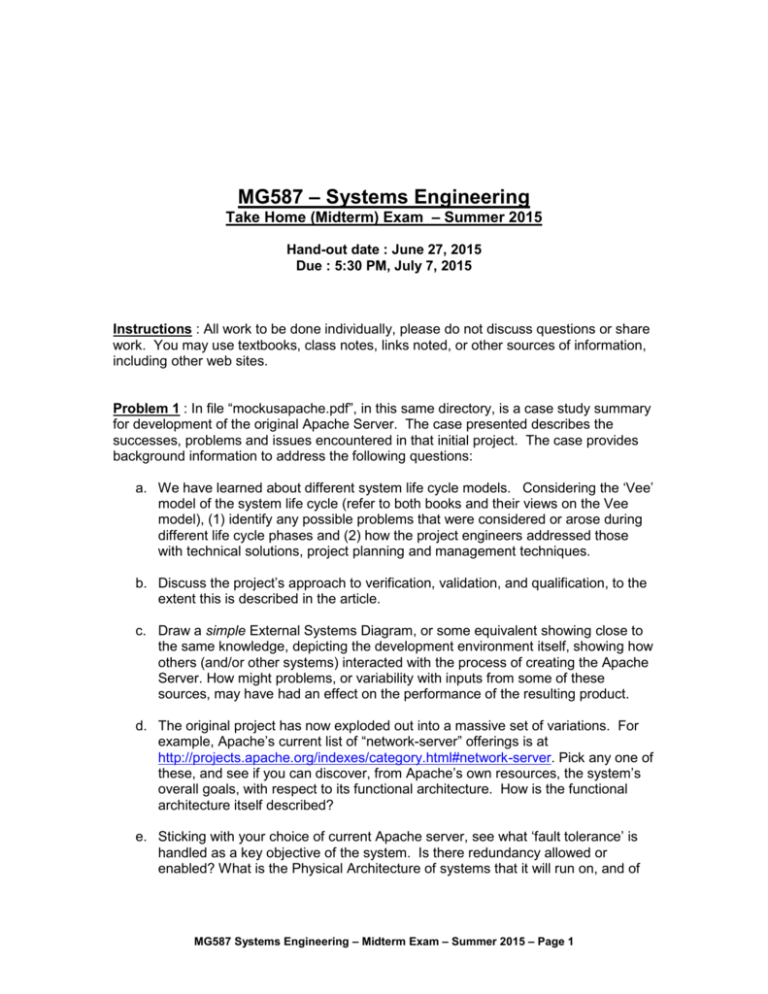
MG587 – Systems Engineering Take Home (Midterm) Exam – Summer 2015 Hand-out date : June 27, 2015 Due : 5:30 PM, July 7, 2015 Instructions : All work to be done individually, please do not discuss questions or share work. You may use textbooks, class notes, links noted, or other sources of information, including other web sites. Problem 1 : In file “mockusapache.pdf”, in this same directory, is a case study summary for development of the original Apache Server. The case presented describes the successes, problems and issues encountered in that initial project. The case provides background information to address the following questions: a. We have learned about different system life cycle models. Considering the ‘Vee’ model of the system life cycle (refer to both books and their views on the Vee model), (1) identify any possible problems that were considered or arose during different life cycle phases and (2) how the project engineers addressed those with technical solutions, project planning and management techniques. b. Discuss the project’s approach to verification, validation, and qualification, to the extent this is described in the article. c. Draw a simple External Systems Diagram, or some equivalent showing close to the same knowledge, depicting the development environment itself, showing how others (and/or other systems) interacted with the process of creating the Apache Server. How might problems, or variability with inputs from some of these sources, may have had an effect on the performance of the resulting product. d. The original project has now exploded out into a massive set of variations. For example, Apache’s current list of “network-server” offerings is at http://projects.apache.org/indexes/category.html#network-server. Pick any one of these, and see if you can discover, from Apache’s own resources, the system’s overall goals, with respect to its functional architecture. How is the functional architecture itself described? e. Sticking with your choice of current Apache server, see what ‘fault tolerance’ is handled as a key objective of the system. Is there redundancy allowed or enabled? What is the Physical Architecture of systems that it will run on, and of MG587 Systems Engineering – Midterm Exam – Summer 2015 – Page 1 those it is designed to attach to (e.g., serve)? Is there provision for distributed control? f. What open architecture concepts, discussed in the original article, appear still to be as key objectives for system design in Apache’s products. Describe how the project engineers use these concepts in the design of the systems. Problem 2 : I’m tired of my Time Warner program menu! their new one): It looks like this (and this is Image from http://www.syracuse.com/n ews/index.ssf/2012/06/time _warner_cable_menu_chan ges_twc_onscreen_guide.ht ml. Your job, on this problem, is to “be” Ideo, the people who creatively invented a new shopping cart in our first-day video. Invent a superior cable TV program menu system, focusing on the software that would have to reside in a cable box or DVR to do it. a. Feature list: It’s up to you to decide the list of features, because these could include new and imaginative ones. Your list does not have to be complete, but it should cover basics as well as new ideas.. b. Create an External Systems Diagram for the system (IDEF0 model). c. Write a sample of detailed system requirements per the following guidelines: i. ii. iii. iv. Input/Output requirements – write 5 examples. Technology and System Wide – write 3 examples. Trade Offs – write 2 examples. System Qualification – write 2 examples. d. Create a Functional Architecture using the Hatley Pirbhai decomposition template, create the A-0 level (top level function) and two levels below (IDEF0 model or anything else of your choosing). MG587 Systems Engineering – Midterm Exam – Summer 2015 – Page 2
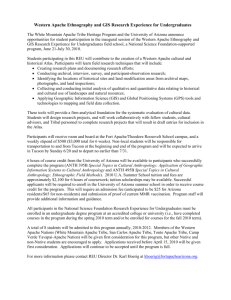
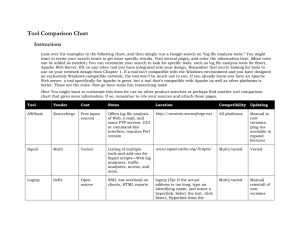
![[#MODULES-2756] apache::mod::deflate exec mkdir error](http://s3.studylib.net/store/data/007740364_2-82c5aa7294b9b87bcd9af8c86f942c1c-300x300.png)


